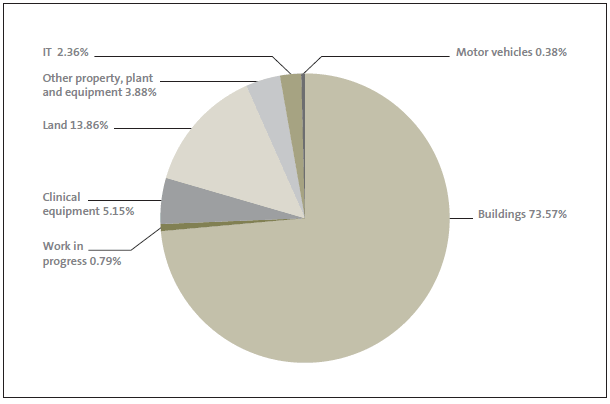Part 3: District health boards' asset management
3.1
Capital asset management is about effectively managing assets during their economic lives, which includes improving the quality and relevance of information to support decision-making, future service delivery, and asset performance.
3.2
We expect each DHB to:
- know how well its mix of assets meets outcome and service delivery needs, now and in the future (that is, link its asset management to its strategic planning);
- have information reliable enough to support its planning, defined service levels, documented lifecycle management strategies, and complete financial forecasts;
- make good links between asset management planning and its other service and financial planning, with clear responsibility for planning and for having an up-to-date documented plan in place; and
- understand, respond to, and manage demand for its assets and the risks related to them.
3.3
In our high-level review in 2011 of how DHBs manage their assets,8 we found that most DHBs had not improved how they plan to manage assets since 2009, when the Ministry required DHBs to document their approach to asset management in asset management plans. Few DHBs had documented their policy for managing assets, and their plans typically focused on the capital needed rather than why the asset is needed and when. We also found that most DHBs had not brought together financial forecasts of capital and operational expenditure, did not keep their asset management planning up to date, and had not included a risk register within their plans.
3.4
We have followed up our recommendations with individual DHBs, as part of our annual audits for 2011/12.
3.5
Our auditors reported that nine DHBs still needed to update their asset management plans. In some instances, delays were because of changes and developments at a regional planning level and the need to align the asset management plan with clinical services reviews and regional planning. Our auditors also reported that they had recommended improvements to the asset management plans of three other DHBs.
3.6
We will continue to follow up with individual DHBs on aspects of asset management planning that need to improve.
3.7
Since 2009, the Ministry has required DHBs to produce asset management plans and to submit their capital intentions to the Ministry. Business cases for new investment need to integrate service planning – of the individual DHB, between DHBs, throughout a region, and nationally.
3.8
We are carrying out a performance audit to establish whether capital investment planning aligns with DHBs' regional services planning and is guided by high quality information about future needs. The audit will focus on the Ministry and the Capital Investment Committee processes, and two of the four regions (the Northern and South Island regions).
3.9
We intend to present our report to Parliament by the end of 2013.
Profile of district health board assets
3.10
Our work programme in 2012/13 focuses on the question: Our future needs – is the public sector ready? As part of this work, we wanted to find out more about the management of significant physical assets in the public sector.
3.11
In October 2012, we asked public entities that had significant assets about the condition of their assets, how well they are maintained, whether enough money is being spent to renew them, and the adequacy of checking and reporting on those assets.
3.12
Our focus was on assets that are significant to the delivery of services. Although assets that are significant to one entity might not be significant to another, the information provided is helping us to compare broad groups within the public sector and to build a picture of the state of the public sector as a whole.
3.13
We received responses from about 350 entities throughout the wider public sector, including all 20 DHBs.
3.14
The responses showed that DHBs hold $5 billion of property, plant, and equipment (excluding intangible assets). Of those assets, $4.3 billion worth of assets are considered significant (see Figure 15). They are largely made up of land and buildings, which together account for 87% of the value of significant assets.
Figure 15
Significant health sector assets

3.15
DHBs spent $575 million on assets in 2011/12, including renewing existing assets and spending on new assets. This equates to 11.5% of the $5 billion of assets held by DHBs. Later this year, we intend to report further analysis to Parliament on asset management in the public sector.
8: Health sector: Results of the 2010/11 audits (Part 4), available at www.oag.govt.nz.
page top
